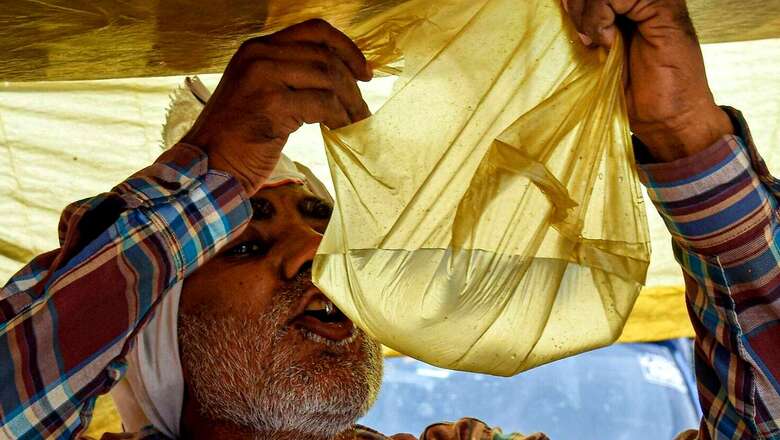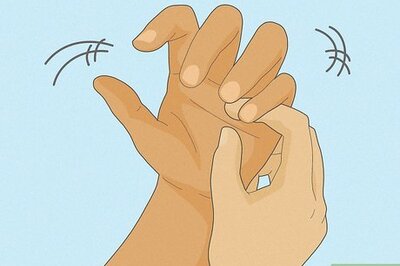
views
An eight-year-old boy in Sangrur district of Punjab died on Monday amid an intense heatwave in the state. The family said that the boy got sick due to heatwave and couldn’t be saved despite being taken to multiple hospitals, as per an Indian Express report.
Since the start of summer, temperatures stayed several notches above normal in Uttar Pradesh, Delhi, Rajasthan, Punjab, Haryana, and Madhya Pradesh for days together, with brief intervals of normal weather.
The Indian Meteorological Department (IMD) defines heatwave as “a condition of air temperature which becomes fatal to human body when exposed.” India is one of the five countries in the world whose vulnerable populations had the most exposure to extreme heat over the past five years, according to The Lancet Countdown report, released in October 2021.
What is the human cost of heatwave?
Heat-related illness has claimed the lives of 25 people in Maharashtra this year. The health department data showed that over 374 cases of heat stroke have been reported in March and April, although experts say the actual number could be much higher.
In India, a significant number of deaths occur every year due to heat-related illnesses. As per government data, a total of 3,775 HRI deaths were reported during 2015-2019 (2,040 deaths in 2015, 1,111 deaths in year 2016, 384 deaths in year 2017, 25 deaths in the year 2018, and 215 deaths in 2019).
The Intergovernmental Panel on Climate Change (IPCC)’s working group II report titled “Climate Change 2022: Impacts, Adaptation and Vulnerability” released recently said that in addition to all-cause mortality, deaths related to circulatory, respiratory, diabetic and infectious disease, as well as infant mortality are increased with high temperature.
“Increases in heavy rain and temperature will increase the risk of diarrheal diseases, dengue fever and malaria in tropical and subtropical Asia. More frequent hot days and intense heatwaves will increase heat-related deaths in Asia,” the authors of the report wrote.
It is also important to note that outdoor labourers are arguably the most affected section of people as their working conditions do not allow any sort of protection from the extreme heat condition.
What are the health concerns associated with heatwave?
- Heat cramps: Heat cramps are muscle spasms caused by dehydration and electrolytes loss. This is usually caused by intense physical activity in high temperatures which is often accompanied by heavy sweating.
- Heat exhaustion: As per the Mayo Clinic, heat exhaustion is one of the three heat-related conditions in this increasing order of severity – heat cramps, heat exhaustion, and heat stroke, according to Mayo Clinic. The symptoms are – confusion, dizziness, fainting, fatigue, headache, muscle or abdominal cramps, nausea or diarrhoea, pale skin, heavy sweating, rapid heartbeat. It’s caused when you are exposed to high temperatures and experience dehydration.
- Heat stroke: Heat strokes occur when body temperature 104*F from exposure to extreme heat. Symptoms include fainting, throbbing headache; dizziness and light-headedness; lack of sweating despite the heat; red, hot, and dry skin; nausea and vomiting, and more.
What should you do to protect yourself from heatwave?
The World Health Organization recommends (WHO) keeping the body cool by taking cool showers, wearing loose-fitting clothes of natural materials, and drinking water regularly.
The WHO also suggests opening all windows and shutters during the night and the early morning, when the outside temperature is lower; hanging wet towels to cool down the room air.
“People need to be reminded that they cannot work outdoors during peak afternoon hours; need to wear light-coloured clothes; wipe their bodies with a wet cloth; and rest every 30-60 minutes while working outdoors,” Dr Dileep Mavlankar, who heads the Indian Institute of Public Health in Gandhinagar, was quoted by Hindustan Times as saying.
Avoid strenuous physical activity if you can, says WHO. If you must do strenuous activity, do it during the coolest part of the day, which is usually in the morning between 4 and 7 am.
If you feel dizzy, weak, anxious or have intense thirst and headache, try to get help immediately. Move to a cool place as soon as possible and measure your body temperature. Drink some water or fruit juice to rehydrate. Consult your doctor if you feel unusual symptoms or if symptoms persist.
Read all the Latest India News here
















Comments
0 comment